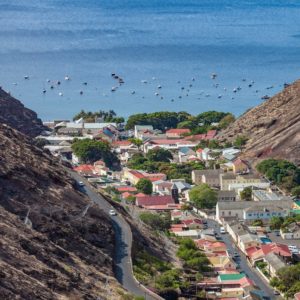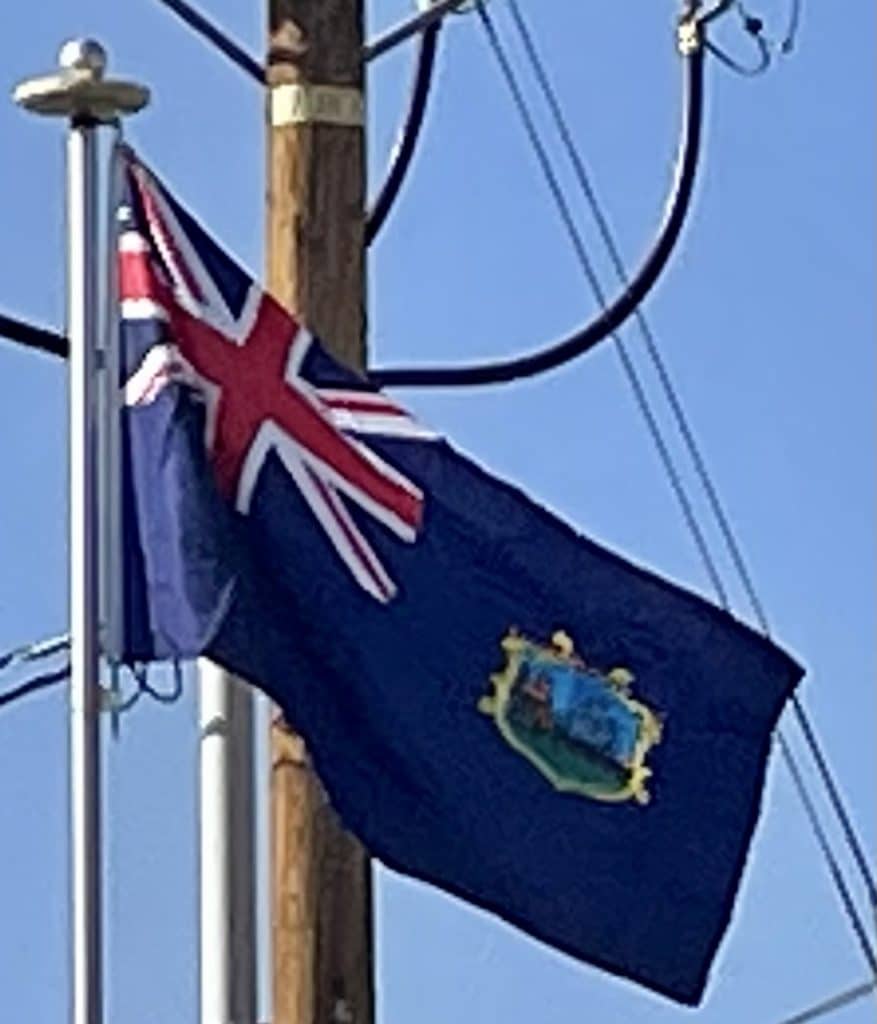A 2020 report states that the island’s prosperity ended after 1869 when “the Suez Canal shifted trade routes north”. A 2019 report explained that “ships no longer needed a stopping point on a longer journey to Europe”. The number of ships calling at the island fell from 1,100 in 1855 to only 288 in 1889.[20]
On 11 April 1898 American Joshua Slocum, on his solo round-the-world voyage, arrived at Jamestown. He departed on 20 April 1898 for the final leg of his circumnavigation, having been extended hospitality by the governor, His Excellency Sir R A Standale. He presented two lectures on his voyage and was invited to Longwood by the French Consular agent.

By the end of 1899, St Helena was connected to London by undersea cable; this allowed for telegraph communication. In 1906, the British government withdrew the garrison; when spending by the soldiers stopped, there was a negative impact on the economy.
In 1900 and 1901, over 6,000 Boer prisoners were held on the island, during the Second Anglo-Boer War. A 2019 report states that “no traces remain of the two POW camps”, but adds that “the Boer Cemetery is a poignant spot”. Among the notables were Piet Cronjé and his wife after their defeat at Battle of Paardeberg. The resulting population reached an all-time high of 9,850 in 1901. By 1911, however, that had declined to 3,520 people.
A local industry manufacturing fiber from New Zealand flax was successfully re-established in 1907 and generated considerable income during the First World War. Ascension Island was made a dependency of Saint Helena in 1922, and Tristan da Cunha followed in 1938. During the Second World War, the United States built Wideawake airport on Ascension in 1942, but no military use was made of Saint Helena except maintenance of its defenses.
Attendance at school became mandatory in 1942, for ages 5 to 15 in 1941 and the government took over control of the education system. The first secondary school opened in 1946. In the same year, the Americans built Wideawake Airfield (RAF Ascension Island) and that project generated numerous jobs for St Helena; the sale of flax for rope also generated revenue for the island. However, the industry declined after 1951 because of transport costs and competition from synthetic fibers. The decision in 1965 by the British Post Office to use synthetic fibers for its mailbags was a further blow, contributing to the closure of the island’s flax mills in 1965.
From 1958, the Union Castle shipping line gradually reduced its service calls to the island. Curnow Shipping, based in Avonmouth, replaced the Union-Castle Line mail-ship service in 1977, using the RMS (Royal Mail Ship) St Helena which was introduced in 1989.
1981 to present:

The British Nationality Act 1981 reclassified Saint Helena and the other Crown colonies as British Dependent Territories. Saints lost their right of abode in Britain. For the next 20 years, many could find only low-paid work with the island government, and the only available employment outside Saint Helena was on the Falkland Islands and Ascension Island. The Development and Economic Planning Department (which still operates) was formed in 1988 to contribute to raising the living standards of the people of Saint Helena.
